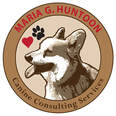A blog for all things dog-related: training, behavior, fun new doggie items, veterinary information and, of course, ways to enhance your relationship with your best four-legged friend!
|
Service dogs, emotional support animals, therapy dogs… there’s a lot of confusion and misunderstanding about their differences, what purpose these dogs serve, their rights to access public spaces, and what kind of training they must complete to become capable of performing their jobs. Many people have disabilities that can be aided by a use of a service dog but they don’t know where to start in terms of their training. Alternately, there are many people who take advantage of the loopholes in the current system just so they can take their pet dogs into stores or on airplanes with them. What Does a Service Dog Do? Service dogs are task-trained to assist a person with a mental or physical disability to perform certain tasks they cannot do on their own, such as guide a blind person around obstacles, serve as a brace or open drawers for a person with mobility issues, or interrupt a panic attack for a person with debilitating anxiety or PTSD. While they do also provide companionship, this is not their primary job. A service dog’s job is not an easy job to fill, and not every dog that starts the path to becoming a service dog can finish it. Teaching a dog a specific task associated with a disability is often the easiest part; it’s building the lifestyle skills that lead to superb behavior in public venues that takes much longer. Many dogs do not have the level of confidence, self-control, patience, problem-solving skills, or healthy level of independence required to handle the high intensity of office buildings, travel systems, public forums, restaurants and malls – no matter how much we try to help them build these skills.
Learning some tasks that are specific to service dog work will require guidance from a trainer who has actually worked in the service dog field and not from a novice, since they require experience and finesse to teach. One such example is called “intelligent disobedience” – when a dog must make the decision to ignore a command from its person if responding is not in the person’s best interest (like if a blind person tells a guide dog to cross the street but a car is coming that the blind person does not realize is there). Some other complicated tasks may include teaching a service dog for a child with autism to “anchor” his weight if the child tries to bolt (rather than running off with the child), or teaching a seizure-response dog to retrieve a phone or medication in an emergency situation (rather than stressing out). These skills must be extremely solid, since in some cases it could mean the difference between life and death for the service dog’s human partner.
The Emotional Support Animal (ESA) Conundrum An emotional support animal’s (ESA’s) task is to deescalate a situation when it’s getting to be too much for its person who has a mental or emotional disability, such as debilitating anxiety or panic attacks. In order to get a legitimate ESA, a person must have a prescription from their primary psychologist indicating that their emotional condition requires intervention from an animal in order to function. It’s important to note that the Americans With Disabilities Act (see below) does not apply to ESA’s and an ESA does NOT have the same rights as a service dog. In fact, an ESA’s rights are much more limited: an ESA can only gain access to housing facilities where pets are normally prohibited and to fly in the cabin on an airplane alongside its human partner.
The Ever-Pupular Therapy Dogs Therapy dogs do not serve a particular person with a disability and therefore are not protected under the ADA. This means they do not have any special rights for public access, housing, airline travel or hotel stay. After meeting some training requirements and passing a certification test however, a therapy dog CAN be used to provide therapeutic companionship in group settings with prior approval from the premises. These settings can include in classrooms for reading time with children, in an airport to calm stressed travelers, or in a nursing home or hospital to provide comfort to the sick or elderly. Therapy dogs can be of various sizes, breeds, and ages. For information on testing requirements, please visit the Therapy Dogs International website at www.tdi-dog.org. Gaps in the System In spite of the complexity of their jobs, there is currently no set regulations regarding the amount training that a service dog or ESA must complete to become certified. Sadly, this is where many people are taking advantage of the system. It is easy for virtually anyone to purchase a “service dog” vest and identification card online with no proof of training. There are also dog trainers who have turned to making a profit by claiming they can turn a person’s dog into a service dog after a short 6-week course, but these courses do not have the time to build the necessary life skills to perform most service dog work and many rely on management equipment such as shock and prong collars. There are websites that claim for $40 you can have a letter from a psychologist (who has never met you in person and does not understand any history of your behavior, etc) recommending that you have an ESA. I consider these actions to be fraudulent.
In the same way we could consider it fraud for someone to impersonate a brain surgeon without the correct credentials, I feel it is also fraudulent for us to place a dog in a service dog position if he is not qualified for it. “Service dogs” who have not had the proper training are just “imposters” and have on countless occasions ruined things for legit service dogs and the people who rely on them. People who say their dog is a “service dog” when he’s not (or acting like they have a disability in which they need a service dog when they don’t) is like taking up a handicapped parking spot just because it’s raining and they don’t feel like walking (but they can) or saying they’re veterans to get a free meal on Veteran’s Day (when they’re not). Morally, they’re taking advantage of the system and it’s appalling – please don’t be one of those people. The Americans With Disabilties Act (ADA) This federal law was signed into legislation in 1990 and amended in 2008 to provide people with disabilities easier access and to warn against unlawful discrimination. Under the ADA, it is unlawful to ask a person who has a service dog what their disability is – and as we know, while physical disabilities are often more obvious, mental disabilities are not. You can ask what that person’s dog is task-trained to do to aid their disability and that person should be able to describe those tasks in detail. Here are just some of the conditions recognized as a disability by the Act: Blindness, deafness, missing limbs, mobility impairments requiring the use of a wheelchair, autism, multiple sclerosis, muscular dystrophy, cerebral palsy, post-traumatic stress disorder, schizophrenia, obsessive-compulsive disorder, and bipolar disorder. For more information about how the ADA applies to service dogs, and for a rundown of accredited service dog organizations, please visit: U.S. Department of Justice ADA Requirements for Service Animals - https://www.ada.gov/service_animals_2010.htm Assistance Dogs International - https://www.assistancedogsinternational.org/ I feel there is an immense need for more precise regulations regarding training requirements and certification for service dogs and ESA’s, and better education and resources for people with disabilities to meet their needs for a service dog. Together through education, perhaps we can decrease the number of people who take advantage of the service dog title every year and help those who have a true need for service dogs acquire the superbly-trained dogs that they need in the right way.
0 Comments
Your comment will be posted after it is approved.
Leave a Reply. |
AuthorMaria Huntoon, CBCC-KA Archives
April 2020
Categories |





 RSS Feed
RSS Feed






